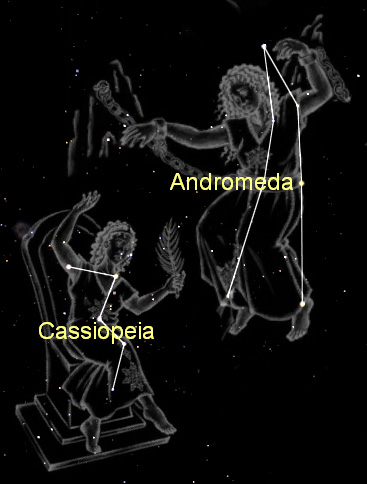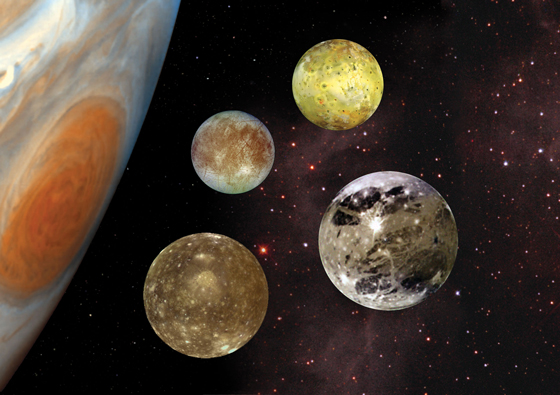
Naming stars for our mothers is popular today. In fact, many objects in the night sky have been named after mothers for thousands of years. And now mothers fly among the stars as astronauts!
The Name A Star Live constellations Andromeda and Cassiopeia are named after two beautiful mothers from classical mythology. Cassiopeia, the Queen of the Ethiopians and the mother of Andromeda, was a prideful woman who boasted that she was more beautiful than the female attendants to Poseidon, the god of the sea. For this transgression Poseidon punished Cassiopeia by sending a sea monster to attack Cassiopeia’s country and to kill Andromeda. But Andromeda was saved and would later have seven children of her own. Now both mothers travel together in the heavens above as the constellations we know them by today.
Many of the planet Jupiter’s 79 moons are named for goddesses, demi-goddesses and other mythological figures who had various entanglements with the Greek God Zeus – known in Roman mythology as Jupiter. Here is a list of just some of Jupiter’s mistresses (after whom moons of Jupiter are named) and their offspring:
• Io bore Jupiter a son named Epaphos;
• Callisto bore Jupiter a son named Arkas;
• Elara was the mother of Tityus, a giant;
• Himalia, a nymph, bore three sons named Spartaeus, Cronius, and Cytus;
• Leda was the mother of Castor and Pollux, after whom the two brightest stars of the constellation Gemini (“the twins”) are named.

But there were other females in Zeus’ life who were not mistresses. Jupiter’s wife was Juno. Given her husband’s not-so-faithful behavior, she quite understandably didn’t trust her hubby: The two just didn’t get along! So modern astronomers have basically given her a divorce: Rather than orbit Jupiter as many of his paramours do, Juno orbits the Sun as one of the larger asteroids in our solar system. Finally, one of the planet Jupiter’s closest moons is named Amalthea, a goat who was the nurse to Zeus when he was a child. When Zeus was grown, he used her hide as his thunder shield and she was placed in the sky as the (now defunct) constellation Capra.

If you’re looking for something a little more down to Earth, the first actual, human mother to fly in space was Anna Lee Fisher. She is a decorated astronaut who flew on space shuttle mission STS-51-A in 1984. A chemist and physician by training, her honors include: NASA Space Flight Medal; Lloyd’s of London Silver Medal for Meritorious Salvage Operations; Mother of the Year Award, 1984; UCLA Professional Achievement Award; UCLA Medical Professional Achievement Award; and NASA Exceptional Service Medal, 1999. Balancing her professional and personal lives, she took a leave of absence from NASA from 1989 to 1995 to raise her family, and then returned to her post in 1996 as Chief of the Space Station Branch.
Other women who have been both mothers and astronauts include Karen L. Nyberg, Dorothy M. Metcalf-Lindenburger, Nicole Passonno Stott and Ellen S. Baker.

There are, of course, so many more mothers to celebrate and remember on Mother’s Day. We’d be delighted to hear your Mother’s Day story from this or any year. Your mother may not be an astronaut – and thankfully she was not a companion of Zeus! But like the ancient Greeks and Romans you can place her among the stars by naming a star for her. We’ll launch her star name into space on our next mission — you can even buy a mission patch for her!